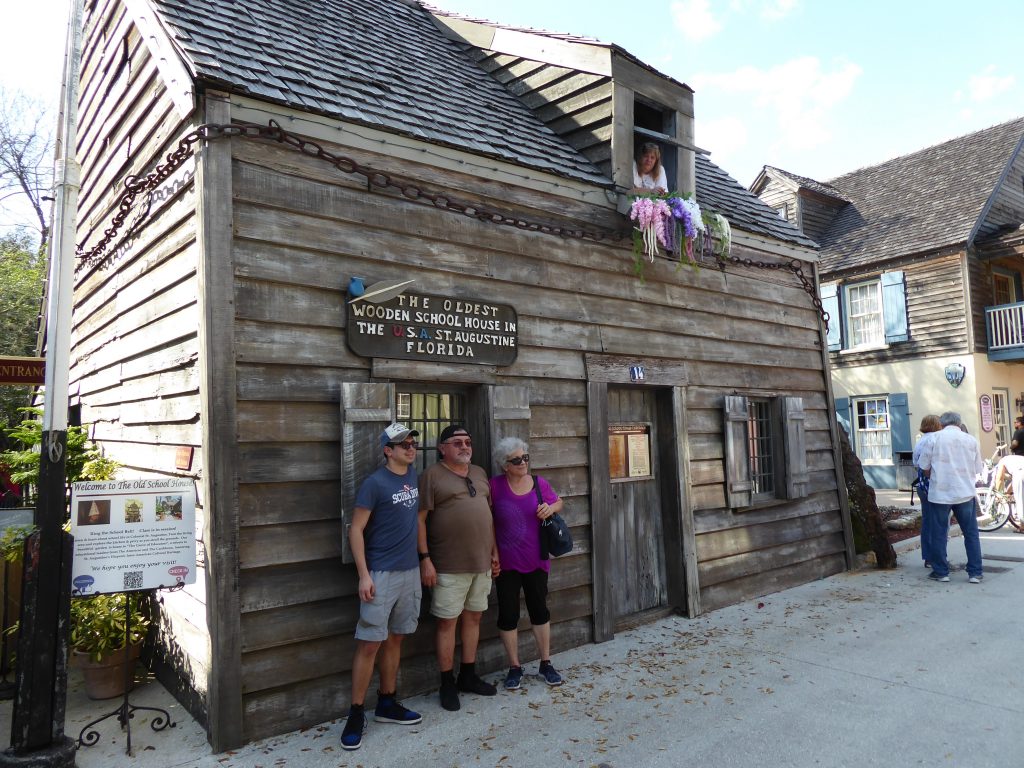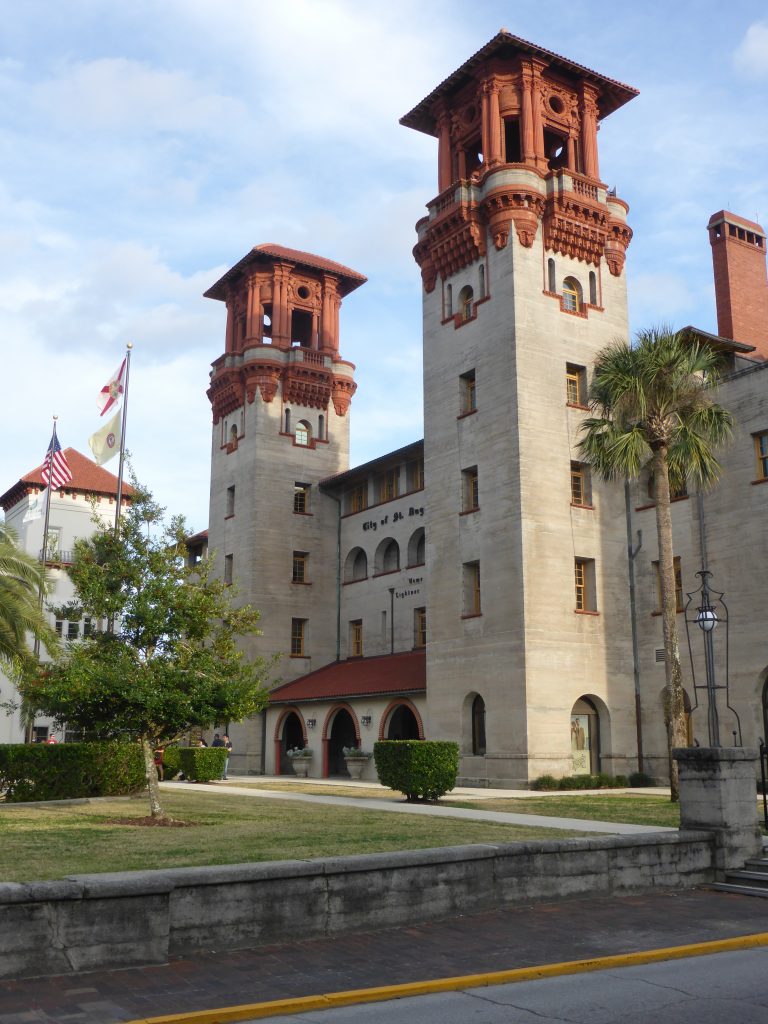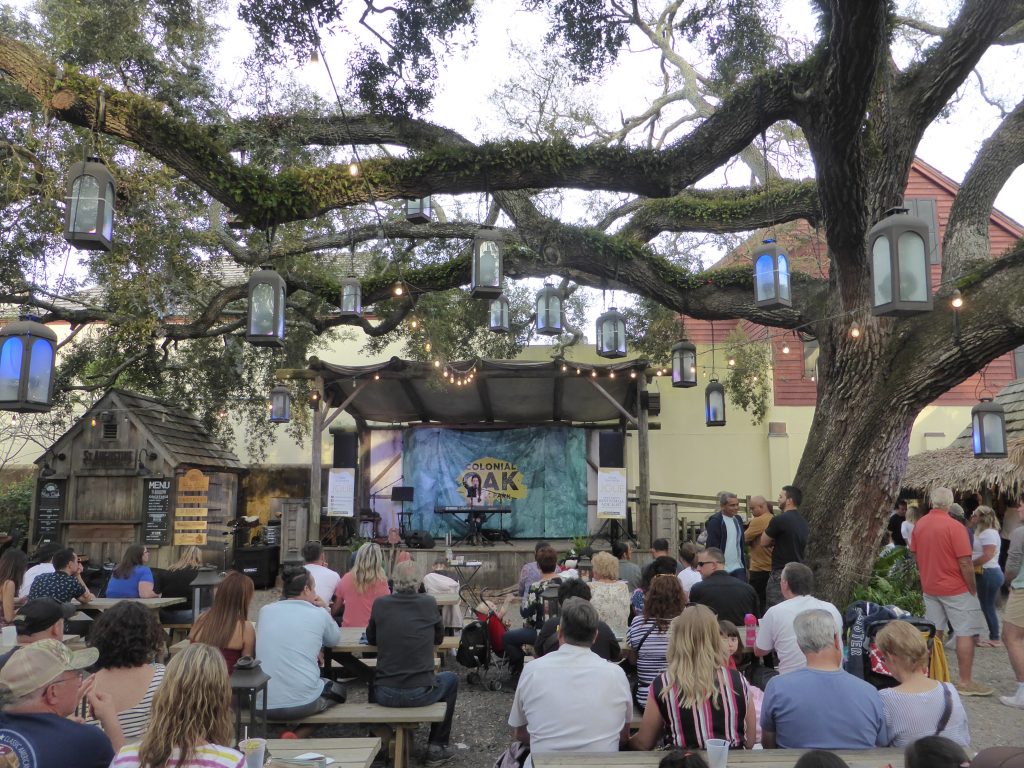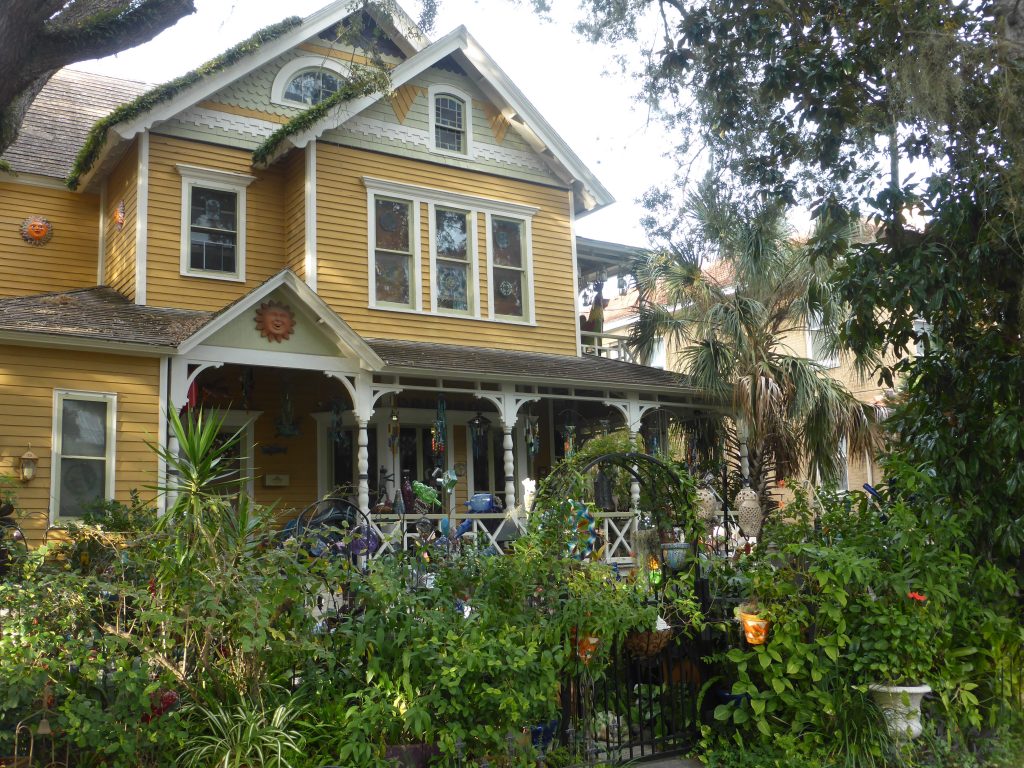Cycling around the historic streets of St Augustine you could be forgiven for thinking you were in Spain rather than the United States. Founded in 1565 by the Spanish Admiral Pedro Menendez de Aviles and situated on the east coast of the Florida peninsula just forty miles south of Jacksonville, the city is the oldest European founded settlement in the continental U.S. in continuous occupation.

For the first two hundred years it was the capital of Spanish Florida, despite numerous attempts by us Brits to spoil the party. Sir Francis Drake was the first to have a go in 1586, when during the Anglo-Spanish War, he sacked and burned the place. Less than a century later, in 1668, the English buccaneer Robert Searle launched another attack killing sixty people and pillaging government buildings, churches and houses.
A few years later the French had a bash and were rebuffed, before Blighty returned in the form of James Moore, English Governor of colonial Carolina, who failing the take the fort after a siege of 58 days threw a strop and ordered British troops to burn St Augustine to the ground.
Eventually persistance won out and following Great Britain’s victory over France and Spain in the Seven Year’s War Britain finally got its hands on Florida. In the end this only lasted twenty years before the world’s major powers played a game of poker with the smaller countries and we handed it back to Spain in return for the Bahamas.
All those years of change and turmoil have made modern day St Augustine an incredible melting pot of cultures which is reflected in its architecture, the highlight of which being the Spanish fort of Castillo de San Marcos which was completed in 1695 and guards the waters of Matanzas Bay.

St Augustine can claim the oldest wooden schoolhouse in the United States, dating back to 1716 (anything older than that was burnt my, ahem, us, apologies again for all that etc) and the city’s oldest house is dated at 1723, which by US standards is virtually prehistoric.
Beautifully restored Spanish colonial buildings rub shoulders with magnificent architectural masterpieces built in the Spanish Renaissance style by the hotel and road magnate Henry Flagler.

Chief among them are the Ponce de Leon and Alcazar Hotels, the later of which originally boasted the largest indoor swimming pool of its time, 120ft long, 50ft wide and up to 12ft deep. These ornately decorated palaces take your breath away today, not least because you can’t quite believe you are in Florida, so the impact they had on Victorian guests at a time when the peninsula was a mosquito and alligator infested swamp, can only be imagined.
Suffice it to say I didn’t spend all my time waiting for Terry wandering around historic buildings, I did a few rides out to the coast and also spent a considerable amount of time watching bands and drinking craft beers at the Colonial Oak Music Park, right in the heart of the vibrant Historic District and so called because music lovers attending the outdoor venue shelter under the giant arms of an expansive Live Oak tree.

St Augustine was certainly becoming addictive and when I told Terry not to rush his decision to join me I wasn’t joking. The trouble was my thoughts were moving further and further away from the mindset of a long distance ride and more and more towards being a happy go lucky tourist, just like everyone else wandering the historic streets and taking in the atmosphere. Was that really so bad?


Thanks for the tribute to mum! Your writing really brings it alive for us Sunday cyclists!!! So where next??
Thanks Liz! I do like the idea of Ipswich – Istanbul – and there is always The Great Divide!